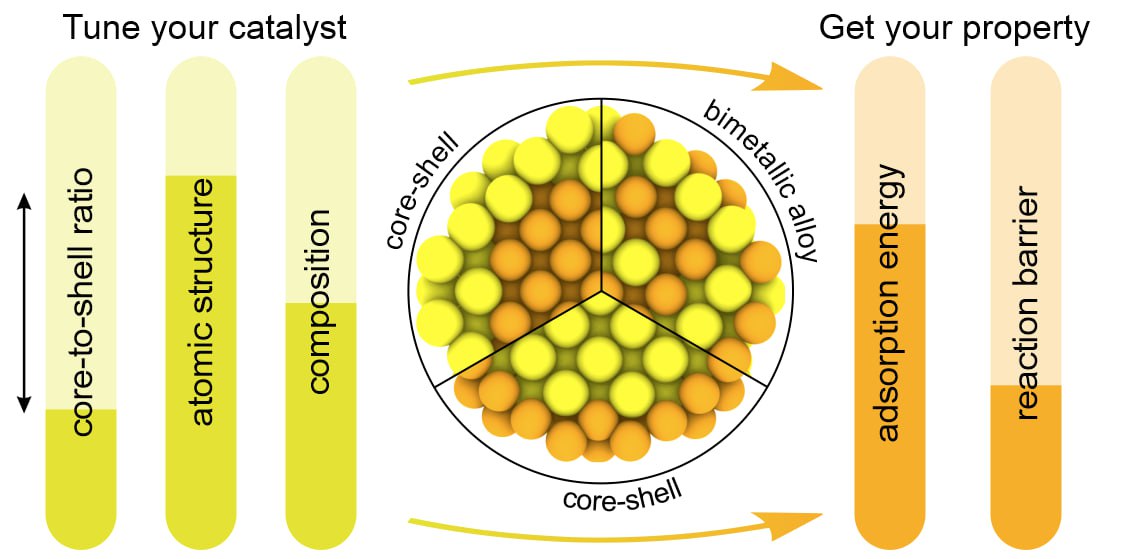The demand for renewable energy sources is constantly growing fuelling the development of catalytic-based technologies. By separating and forming chemical bonds, these technologies can be used to produce environmentally friendly energy. In recent decades, researchers have been actively studying how core-shell nanoparticles can improve the performance of catalytic systems, which mainly use metal catalysts that accelerate chemical reactions. Researchers from Skoltech analyzed the latest achievements in synthesizing core-shell particles, research methods, techniques for adjusting their properties, and also identified the most promising areas for future research. A large review has been published in the Nanoscale journal.
Bimetallic core-shell particles are nanoparticles ranging in size from 1 to 100 nanometers. Their core and shell consist of different metals. Nanoparticles, unlike ordinary particles, possess unique characteristics that enable their active use in cancer diagnosis, the creation of compact electronic devices, and the design of solar panels and in many other fields.
“We made a large review where we show how the properties of nanoparticles can be fine-tuned experimentally. The review covers articles over the last 3-4 years. The methods of synthesis and research of nanomaterials are constantly evolving, so now almost every atom can be observed under a microscope, as well as the layers of different metals in such particles. Research has demonstrated that the catalytic activity of particles can be influenced by changes in the number of metal layers,” said Ilya Chepkasov, the leading author of the study and a senior research scientist at the Energy Transition Center at Skoltech.
The authors have identified several problems that they urge to pay attention to in future studies. The problem of discovering the composition of core-shell particles’ surfaces makes it more challenging to understand the relationship between their structure and properties. To improve the synthesis of bimetallic core-shell particles, it is critical to find out the composition of their surface.
The team also pointed out that the study of nanomaterials requires new theoretical methods to predict the properties of compounds that have not yet been studied experimentally and have not even been synthesized. One of the most effective ways to do so is to use modern advancements in the field of artificial intelligence, for example, descriptor-based and descriptor-free machine learning models to predict the necessary properties. Graph neural networks can be utilized to decode the atomic structure of a nanoparticle and determine the relationships between its structure and properties.
“Our review is not just a systematic description of previous studies, it is an analysis of previously obtained data and a detailed discussion of promising areas that we have identified based on these data. There are many important directions. One of them is the development of new predictive AI-based methods. They will help quickly and accurately determine the desired properties of the future nanoparticles that can be used as catalysts for various chemical processes,” said Alexander Kvashnin, a co-author of the study and a professor at the Energy Transition Center at Skoltech.
Contact information:
Skoltech Communications
+7 (495) 280 14 81

